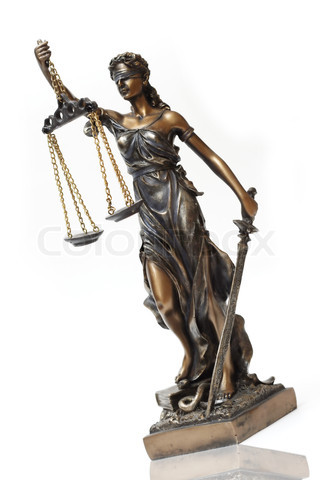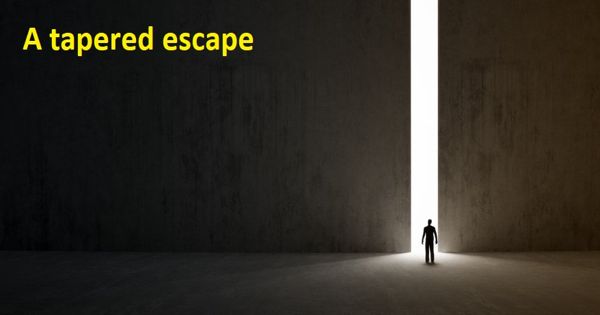Introduction
The subject of legal History Comprises the growth, evolution & development of legal system of a country.
The roots of the present day human institutions lie deeply buried in the past. The legal system of a country is not the creation of one man or of one day; It represents the cumulative fruit of the endeavour, experiene, throughtful planning & patient labour of a large number of a people through generations.
Law & History are interdependent. A Lawyer without History or literature is a mechanic, a mere working mason.
India has a known History of over 5000 years. There were the Hindu & the Muslim periods before the British period. & each had a distinctive legal system of its own.
Comprehensive Study of the indian legal history should comprise the historical process of development of legal institutions in the Hindu & the Muslim periods.
- Jain, M. P, Outline of Indian Legal History – M. P. Jain P.1.
- For the system of law & Justice during the hindu period see- Kul.
The present legal system is what the british created. In the field of law & Justice, as in many other fields, the British period constituted a fundamental break from our traditions of the hoary past.
The Englishmen realising the importance of the development of Judicial under their sway. The administrative responsibility developed to the three presidency Towns. Which were founded by them to facilitate their trade & commerce.
The supreme Court of Calcutta was established in 1774. It was a Court of English law, Consisted of professional English lawyer Judges.
In 1772 the Company took upon itself the responsibility to administer the Bengal province & along with an administrative & revenue system. There was established a Judicial system also, which was known as adalat system. However the adalat system was, reformed & made more effective the executive & through administration of criminals Justice never really become free from Executive Control.
However it is truth that the traditions of the past have made our modern legal system. without a proper historical back ground it may be difficult of appreciate a particular feature of the system. The Historical perspective throws light on the anomalies that exist here & there in the system.
Objectives of study:
Objective is very important for any kinds of work. Without objective any work is not complete.
To know about whole judiciary in Bangladesh.
- To know how may courts are in Bangladesh
- To know about its jurisdiction and power and functions.
- To know about all civil and criminal courts in Bangladesh.
- To know about all tribunals and special courts in Bangladesh.
Scope and limitations of the study:
Scope and limitation is a very important things of a study. We discuss this research monograph civil and criminal courts and there structure and jurisdiction, various kinds of tribunals its structure and jurisdiction. Not outside this. Because research monograph has a some scope and limitation. Outside of the topic we don’t discuss it.
Historical Back ground of the Judicial system in Bangladesh:
In India the Mughal Period begins with the victory of Babar in 1526 Humayun, lost his lcingdom to sher shah in 1540, regained it from sher shah in July 1555. The Mnghal empire Continued form 1555 the 1750.
During the Mughal period, the civil administration was devided into the Imperial Capital, Provinces (subahs) parganahs & villages. The Mughal emperor was the supreme authority. During the mughal period, the emperor was Considered the fountain of Justice.
Mughal Period
a) Courts at capital.
At Delhi, three important Courts were established.
1. The Emperors Court preside over by the Emperor, was the highest Court of the Empire. Its had Jurisdiction to hear original civil & Criminal Cases.2
2. The Court of Chief Justice :-
The Court of Chief Justice presided over by the chief Justice, was the second important court at capital. It has Jurisdiction to try original, civil, & criminal cases & also to hear appeals from the provincial courts.
3. Chief Revenue Court :-
This was the 3rd important court in Delhi, was the highest court of Appeal to decide revenue cases. The court was presided over by the Diwane-e-Ala.
Besides the three important courts, there were also two lower courts as
i). The court of Quazi of Delhi,
ii) The Curt of Quazi-e-Askar.3
b. Provinces :-
In each province (subah) there were three courts flowingly :-
1. (Adalat-e Nazim-e-subah) :-
Its had original Jurisdiction in all cases arising in the provincial capital, it was presided over by the goveror.
ii) The provincial chief Appellate Court :-
It was presided over by the Quazi-e- subah. The Court had original & Civil & Criminal Jurisdiction.
iii) Provincial chief Revenue court :-
It was presided over by Diwan-e-Subah. It had original & civil Jurisdiction in all revenue matters. 4
C) District Courts :-
District Courts were divided into four classess.
1. District Qazi :-
This Court had Jurisdiction to try all civil & Cuiminal matters.
2. Faujdar Adalat ;-
Faujdar adalat had Jurisdiction to try, Cases Concerning riots & state security.
3. Kotwali Court ;-
4. Amalguzari kachari ;-
d. Parganah :-
Each parganah were devided into 3 courts: namely
1. Adalate-e- Parganals was presided over by Quzi-e-Parganah. The court had Jurisdiction to try all civil & criminal cases arising with its original Jurisdiction.
2. Court of kotwali was presided by kotwal -e- Parganah to decide such cases as are found in the modern police Act.
3. Amin was the presiding officer in kachahri which decided revenue cases.
e) village Courts :-
In each village there were two courts.
1. Village Panchayat
This Court had power to decide all petty local civil & criminal matters.
2. The Court of Zaminder :-
In the late Mughale period Zamin dar’s Courts were empowered to try petty Criminal & civil matters. [5]
British or Colonial Period :-
The development of the administration of Justice in British india may be divided into followings five periods :
1. First period :
Early Administration of Justice until the charter of 1726- This period marks the beginning of the British administration of Justice in India. The East India Company gradually took possession of three factories & settlements at Bombay, Madras & Culcutta. The first Mayon’s Court in india was established at Madras by company charter of 1687.
The Company acquired territorial acquition of Bangla, Bihar & orissa in 1765. Thought the company took the full control of Diwani & military Power , the administration of both civil & criminal justice were left to the indigenous machinery at the hand of natives untill 1772.
Second period :
The Era of the Mayor’s :- The charter of 1726 established a corporation of justice for each presidency towns : following changes in the administration of justice were made by this charter
1. Civil Judiciary
A Mayor’s Court was established in each presidency town. This court consisted of the Mayor & nine aldermen. The Mayor’s court had jurisdiction to try hear & determine all civil suits arising within the presidency town & its subordinate factories.
Criminal Judiciary :-
Justice of the peace :-
In each presidency town the criminal justice was vested in the Governor & five Senior members of the Council of the Company. A Justice of the peace could arrest persons accused of committing crimes, punish those who were guilty of minor crimes.
Third period :- ( 1773 – 1881) the Era of the supreme Court :-
Supreme Courts were established in Madras in 1801 & Bombay in 1824 abolishing the mayor court
The supreme court consisted of a chief Justice & three other puisne Judges. The general Jurisdiction of this court was limited within the presidency town. Beyon the presidency town the court exercised personal Jurisdiction. The supreme Court had both original, appellate, civil criminal, ecclesiastical & admiralty jurisdiction.
Fourth period : Era of unification :-
Two paralle Judicial system namely, the company’s court in Mufassil areas & three High Courts of Judicature at three presidency towns. The ordinary jurisdiction of the High Court was limited to the local ilmits of the presidency Towns. The High court was empowered to try all suits except such suits within the jurisdiction.
Constitution & Jurisdiction of the Federal Court :-
The federal court was composed of three judges. one chief justice & two puisne judges. The Federal court was given exclusive Jurisdiction to decide cases.
Judicial system of pakistan ;-
The Judicial system of pakistan was mainly cons’st of supreme court, High courts & two sets of sub-ordinate courts , namely civil courts & criminal courts
Supreme Court of Pakistan :-
The supreme court of pakistan consist or a chief justice & not more then six other judges. This court had original, appellate & advisory jurisdiction.
The High Court :-
The High Court had consisted of a chief justice & such number of other judges. This court had jurisdiction to heae appeals from sub-judges & District Judges in both civil & criminal cases.
Courts within District :-
The District Judge hears appeals from the courts of sub Judges & Munsiffs. It has original Jurisdiction
The District judge also tries criminal cases, it was called the session judges.
Bangladesh period :-
Tegal system is very important for all independent countries. As a independent country Bangladesh has own history of its legal system.
Separation :-
Article 22 of the constitution of independent Bangladesh says,
The state shall ensure the separation of the judiciary from the executive organs of the state 13. But the provision was neglected. However , the non-party Caretaker govt. Started initiatives in Jannary 2007 & it was successful on nov 1. 2007. Judicial system of Bangladesh Consists of a supreme court subordinate courts & tribunals. The supreme court of Bangladesh is consisted with the Appellate Division & the High Court Division.
The Appellate Division has Jurisdiction to hear & deter mine appeals, of the High Court Division . The High Court Division has both appellate & original Jurisdiction. It has Jurisdiction to hear appeals from Subordinate Counts & tribunals. The High Court Division has also power to hear writ application.
The supreme court of Bangladesh:
The supreme court of Bangladesh was established in accordance with the provision of the Article 94 of the constitution of Bangladesh which provide that there shall be a supreme court of Bangladesh comprising the appellate division and the high court division. It is the highest court of Bangladesh supervise courts of Bangladesh is the last resort of the aggrieved person.
Supreme court are divided in to appellate division and high court division:
1. The High court division:
Article 101 of the constituent provides that the HCD shall have original and appellate jurisdictioiin and such other jurisdiction as may be authorized by law. The jurisdiction of the high court division may be divided in to two:
- Ordinary or general jurisdiction
- Constitutional jurisdiction
2. The appellate Division:
The appellate division of supreme court had no original jurisdiction but it had appellate. Jurisdiction only the jursidtaciton the appellate court classify below:
- Ordinary or General Jurisdiction.
- Constitutional jurisdiction.
Different kinds of civil Courts in clouding special courts & tribunals exercising civil jurisdiction in Bangladesh.
Sub-ordinate courts shall be consisted with the district & magistrate courts. It has power to observe both civil and criminal matters and situated in different district and metropolitan area.
According to the section 3 to the civil courts act 1887 five types of civil courts namely:
The court of the district judge
The court of Additional district judge
The Court of Joint district judge
The Court of Senior assistant judge
The Court of assistant judge
The court of district judge:
District judge is the head of civil judiciary in each district. It has administrative control over all civil courts situated in local limits. They are appointed through promotion form the amongst additional district judge. Its pecuniary jurisdiction is unlimited.
Its jurisdiction are as follows:
- Pecuniary jurisdiction
- Appellate jurisdiction
- Administration and transfer jurisdiction.
- Revisional jurisdiction
- Double capacity
Courts of additional district judge:
The courts of additional district is comprised with the additional district judge who is appointed through promotion amongst the joint distinct judge. His pecuniary jurisdiction is unlimited. Usually he tries those cases which are transfer to his court from the court of the district judge. Sometimes he is appointed as additional session judge.
The court of the joint district judge:
They are appointed through the promotion from the amongst the senior assistant judge. Its pecuniary jurisdiction states with taka 4 lack sometimes it acts as a small cases court and assistant session judge.
The courts of senior assistant judge:
This court is consisted with a senior assistant judge they are appointed through promotion of amongst assistant judge. Its a pecuniary jurisdiction does not exceed 4 lack taka.
The court of assistant judge:
This court shall be consisted with an assistant judge. Its pecuniary jurisdiction does not excced 2 lack taka. It has small revisional power in all petty civil cases coming from village courts.
Special tribunal in civil courts:
Special tribunal established in a our legal system in to tow ways.
- Established by constitution
- Established by statute
The formation and function of the administrative tribunal deals with the constitution.
Administrative tribunal:
Administrative tribunal deals such dispute which are relating to employment between the government and its employers. Each administrative Tribunal Consist of one member who is appointed by the government from amongst person who are or have been district judge. It has exclusive jurisdiction to have and determine application made by any persons in the service of the people republic of an statutory public authority in respect of the terms and conditions of his service.
Labour Court
The Government may by notification in the official gazette established labour court as it necessary. A labour court shall be consisted a chairman and two members but in respect of any matter under chapter ten and twelve it shall be consisted by a chairman alone.
The chairman may be appointed from the amongst of the judges or additional district judge. According to the labour court act 2006 sec 214 sub (10). A labur court shall have exclusive jurisdiction on the following matters namely:
- To adjudicate and determine industries dispute on to try any offence under this code.
- To examine and adjudicate any implementation on violations of a settlement which is refried by the government.
- To exercise any rower referred by this code.
And provision contain in chapter 35 of the CRPC shall apply to labour court.
According to the Sec 215 of the labour court 2006 this court shall follow as namely as parable summary procedure for CRPC to try any offence. It has the same power as like the fist class magistrate under the CRPC to trying any offence and for the purpose of punishment it has the same power as like court of session. According to section 216 of the labour court act 2006 except the adjudicating and determining any criminal cases this court shall be deemed as a civil court.
Labour appellate tribunal:
According to the sec 218 of the Bangladesh labour law 2006 labour appellate tribunal shall be consisted by chairman and such number of members. And such chairman shall be appointed from among person who is one has been a judge or an a additional judge of the supreme court labour tribunal shall followed as namely as possible the provision of civil code procedure to hear appeal. This tribunal has power to modification awarded decision, judgment or section given by the labur court. If any person aggrieved on the decision of the labour appellate tribunal than the aggrieved person may appeal to the high court decision.
The Artha Rin-Adalat:
The Artha Rin Adalat was established under section 104 of the Artha-Rin-Adalat Ain act 2003. Every financial institution as listed in section 2 will file suits for recovery of many against a loan under this act. This Adalat follow its own proceeding as well as the proceeding of CPC and application will be file to the court through affidavits. A join district judge will be appointed as judge of this court.
Land survey tribunal:
Land survey tribunal has been established under chapter (xvii A) section 145 (A) of the state acquisition and tenancy X act (1950) SAT act. This chapter has been added in 2004 by an amendment in the act.
The Arbitration tribunal:
According to the section 11 of the arbitration act. The parties shall be free to determine the number of arbitration. And under the provision of this act the parties are able to consist of arbitration tribunals. According to the provision of sec 12 of the arbitration tribunal act 2001 parties may be appointed arbitrator to follow the requirement of the arbitration under this act. According to the provision of sec 17 of the arbitration act 2001 provided that if the party is disagreed then the tribunal may exercise its own jurisdiction-
- There is existence of a valid Arbitration agreement.
- The arbitration tribunal is properly constitute
- Whether the arbitration agreement against the public policy
- The arbitration is unable to preformed
- What matter have been submitted to arbitration is accordance with the arbitration of agreement.
Family court:
Family courts have been established under the ordinance 1985. The assistant judge is the judicial officer of this court.
The court have jurisdiction over the following matters.
- Desolation of marriage
- Dower
- Restitution of conjugal rights
- Maintenance
- Guardianship and custody of children.
Small causes court:
According to sec 25 of the civil courts act 1887 small causes court was established for the settlement of small and petty claims matters between parties.
There is no separate court for small cause but some regular judges, the join district judge, Senior assistant judge and assistant judge have jurisdiction to try cases of small cases. According to the section 15 of the civil courts act 1887 all suits of civil nature of which values does not sec 25 thousand taka shall be cognizable by the court of small causes and it is the highest pecuniary jurisdiction of this court..
According to the sec 25 of the civil courts act 1887.
- Small causes suit valued up to taka six thousand is to be field in the court of assistant judge.
- Suit valuation up to taka 10 thousand to be filed in the senior assistant judge court of the local area.
- Suit valuation up to taka 20 thousand is to be filed is the joint district judge court of the local area vested with small causes lower.
Different kinds of criminal courts and tribunal excising criminal jurisdiction in Bangladesh:
According to the section – 6 of the Code of criminal procedure in 1898, Beside the supreme Court, the shall be five classes of criminal Court :-
- Session Courts
- Metrpolitan Session Courts
- First class magi
- Second class Magi
- Third class Magi.
Courts of Session :-
In every district there is a Court of session. District judges shall have power to work as a Court of session it has jurisdiction to give death sentence to confirm by, the High Court Division. When the court of session is situated in a metropolitan area is called the court of the metropolitan session.
In has following types of jurisdiction
i) Original jurisdiction.
ii) Appellate jurisdiction
iii) Revisional jurisdiction
iv) Jurisdiction as to transfer or with draw a case.
Additional session court:
The court of additional session judge shall exercise same powers like session judge court. When additional session judge situate in matropolitioin area is called additional metropolitan session judge.
Joint session court:
Joint session judge may exercise any power authorize by law except a sentence of death or a term exceeding ten years on of imprisonment when join session judge located in metropolitan area is called joint metropolitan session court.
Magistrate Court:
According to 6.2 to the criminal code procedure 2 types of magistrate courts:
1. Judicial Magistrate
2. Executive Magistrate.
According to section 6.3 there shall be four types of judicial magistrate in district & metropolitan area namely:
A. Chief Metropolitan Magistrate in metropolitan area & chief judicial magistrate to the other.
B. Magistrate of the first class, in metropolitan area known to be metropolitan magistrate, may give any sentence up to 5 years and fine up to taka ten thousand.
C. 2nd class magistrate:
According to the section 32 of the CRPC 2nd class magistrate may pass imprisonment up to 3 years including solitary confinement and give fine up to rive thousand taka.
D. 3rd Class Magistrate:
According to the section 32 of the CRPC 3rd class magistrate give imprisonment up to two thousand taka.
For the purpose of this sub section the world C.M.M. and C.J.M. Shall include A.C.M.M. and A.C.J.M. respectively.
Executive Magistrate :-
According to the section 10 of the criminal code procedure the executive magistrate shall have the following functions & powers.
In every metropolitan area & district area, the Government shall appoint any person to be an executive magistrate as if thinks fit. & among them shall appoint D.M.
- The Government may appoint any excutive magistrate to be an A.D.M & they have the same power as like D.M.
- The Government or D.M define local any time to time within which E.M may exercise its powers.
According to S.4. 2. b. the executive magistrates shall not exercise any judicial function. This court shall do such wonk as like administrative or executive nature, suds as granting of a license, sanctioning a resection or with drawing from a prosecution etc.
Special magistrate :-
The Government may confer upon any person all or any of the powers conferred to executive magistrates, such person is called special executive magistrate. The Government may appoint suds officer to do work for a certain period such magistrate will be appointed out side metropolitan area. Such power will not confer on such person who is in below grade of an assistant superintendent of police.
The Government may with the consultation of the High court Division may confer such power upon any person as like judicial magistrate of the first class, second class & third class magistrate.
District Magistrate:
Ordinary power of the 1st class.
- To hear appeal from orders of magistrate relating to accept or rejecting.
- To hear on refer appeal from magistrate 2nd class and 3rd class.
Nari-o-shisu nirjatan Daman Tribunal
Nari-o-shishu Nirjatan Domon Tribunal has been established under the provision of the Nari-o-shishu Nirjatan domon Ain 2000. According to th3e section 26 every district there must be a tribunal of such cases. If the government think necessary may consist more tribunal in each district. The tribunal shall be consisted by one judge who is appointed for amongst the district judge.[26]
The speedy trial tribunal:
According to the section 4th the speedy trial act 2002 the government may be notification in the official gazette, may consist one more tribunal if he think fitsand may notify the local limited of each tribunal the president may appoint as session judge on retired session judge of be the judge or special tribunal.
According to the see 5 of the speedy tribunal act the government may by notification of the official gazette may confer any offence to try this tribunal.
Ain-shirinkhula-bigno-kari-oporad (speedy try) Tribunal :-
Ain- Shirinkhula – Bigno kari- oporad (speedy try) Ain-2002. The Govt. may by notification of the official gazette cosist one or more speedy trial tribunal. This tribunal is comprised with the first class magistrate. This tribunal shall try any offence under this ordinance.
The Environmental court:
The environment court was established under section 4 of the environment court act 2000 consisting at one judge hold port as joint district judge and it will be situated in every head quarters of the division. The government may appoint special magistrate to try any offence for which the punishment is not exceeding 2 tens imprisonment and 10 thousand taka fine the offence mentioned in section 15 of this act where the highest punishment is up to 10 year imprisonment and 10 lakh fine or both.
The environmental appellate tribunal:
The environmental court act 2000 provided the provision of established on environment appellate tribunal under section 12 comprising of a judge port of district judge.
The government may empowered a district and session judge to worth as a judge to the environment appellate court as an extra change and they will follow the proceeding of CRPC in criminal cases and proceeding toe CPC in civil case suit.
The special tribunal:
The special tribunal has been established under the special power act 1974 with the session judge as special judge of the tribunal. It deal with the offence as special in the schedule of the act for offence punishable under the special power act 1974. The arms act 1818 the explosive substances act 1908. Rule made under the emergency power act 1975. Section 376 of the penal code 1860 etc.
Conclusion :-
The judiciary in Bangladesh is very complex, because it is so verse. It has long history. It has begun long long years ago, it had passed different period, as like muslim period, mughal period, British period, pakistan period then after 1971 Bangladesh acquired independence. British period is very important for as, because they derived us about 200 years & they had tried to change our culture, custom & tried to established their administration. Now a days we are following them indirectly. Most of our law came from them.
It is very difficult topix for thesis because the judicial system of Bangladesh are not easy it has different organs as like, supreme court, high court, appellate division then subordinate court, special courts & tribunals. Each organ has own jurisdictions , Powers & functions for trying any dispute or any offence .
To make these thesis I have faced different problems. For these topix complete books is so rear. It is very difficult to get all things in one book. So I have need to search several book. But there have other problems, different books provide different in formation about historical back ground & our judiciary system. Our judiciary has been separated recently, so amendment book are not available . So i faced book crises.
Finally says that after passing different struggle now our judicial system is independent. Its each organ can work independently.
At last we says that our judicial system has some problem. After the above discussion can say that court judicial system has few problem. It we are able to cure that problem then our judicial system will be able to compute its function speedily & appropriately some days ago our judiciary system has been separated from the executive disjoin. It is important and revolutionary change is our judicial system. There also have few problems also. Exam justice and judge has refaced difternt5 problem in tuner work. Some times if very difficulty for them to do work independently they are were threatened by some powerful person. Juristic adjudge though they have done important work they don’t yet sufficient salary allowances medical service transport & residential facility other essential facility. If they will get highest facility & independence then they willable to do work contently.
















